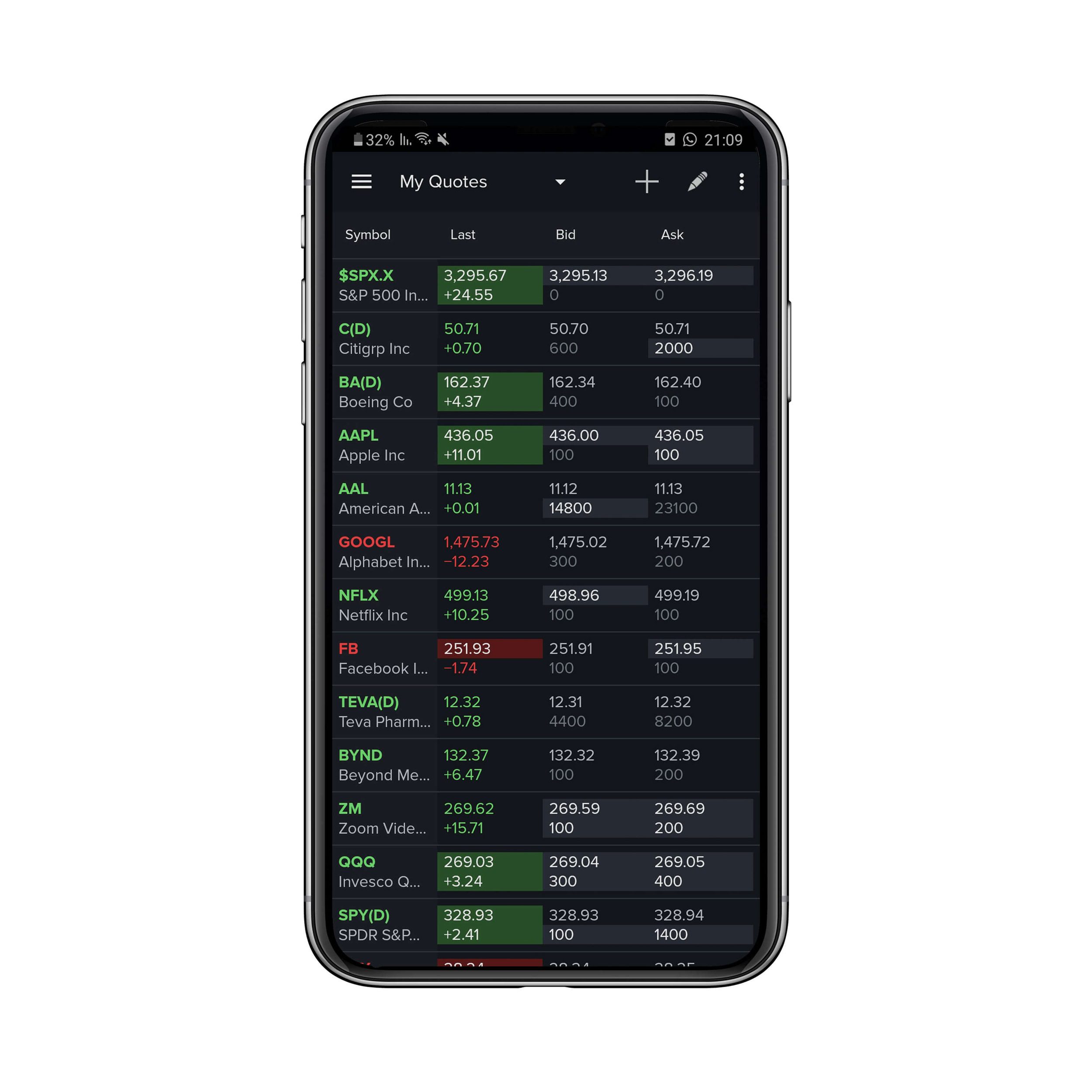

Finance
What Does PT Mean In Stocks
Published: January 18, 2024
Wondering what does PT mean in stocks? Explore the meaning of PT in finance and its significance in stock trading to enhance your investment knowledge.
(Many of the links in this article redirect to a specific reviewed product. Your purchase of these products through affiliate links helps to generate commission for LiveWell, at no extra cost. Learn more)
Table of Contents
Introduction
Welcome to the world of stocks, where investors dive into a complex and dynamic market to seek financial returns. Along this journey, there are various financial terms and concepts to navigate, and one such term is “PT,” or Price Target. In the context of stocks, PT refers to the anticipated price level at which a particular stock is expected to reach in the future.
Investors and analysts use PT as a tool to estimate the potential future value of a stock. It serves as a guide to set expectations and make informed investment decisions. Understanding the meaning and calculation of PT is crucial for those interested in stock analysis and trading.
In this article, we will delve into the world of PT in stocks. We will explore its definition, look at how PT is calculated, discuss its importance in stock analysis, and highlight the limitations it presents. Additionally, we will provide real-life examples of PT in stocks to shed light on its practical application.
Whether you are a seasoned investor or just starting your journey in the stock market, understanding PT can be a valuable piece of knowledge that can empower you to make well-informed investment decisions. So, let’s dive in and unravel the world of PT in stocks.
Definition of PT in Stocks
Price Target (PT) in stocks refers to an estimate of the future price level at which a particular stock is expected to trade. It is a projection made by investment analysts and experts based on various factors, including fundamental analysis, technical analysis, market trends, and company-specific information.
PT is an essential component of stock analysis and plays a significant role in guiding investment decisions. It provides investors with an anticipated price level that they can use as a benchmark for determining the potential return or profit on their investment.
The PT of a stock is usually expressed as a target price per share, representing the price level that analysts believe the stock will reach within a specific timeframe. This timeframe can range from a few weeks to several months or even years, depending on the investment horizon and the analyst’s outlook.
Investment analysts arrive at a PT by conducting thorough research and analysis of a company’s financial performance, industry outlook, market conditions, competitive landscape, and other relevant factors. They may take into consideration factors such as revenue growth, earnings per share (EPS), profit margins, industry trends, market competition, and overall economic conditions.
It is important to note that PT is not a guaranteed price level that a stock will reach. It is an estimation based on the available information and the analyst’s judgment. The stock market is influenced by numerous unpredictable factors, including economic events, geopolitical developments, and investor sentiment, which can affect the actual performance of a stock.
Investors should consider PT as a tool that provides insight into the potential future value of a stock, but it should not be relied upon as the sole basis for making investment decisions. It is advisable to conduct thorough research, analyze multiple indicators, and consider alternative points of view before making any investment choices.
How PT is Calculated
The calculation of Price Target (PT) in stocks involves a combination of fundamental analysis, technical analysis, and other relevant factors. Analysts and experts employ various methods and models to arrive at a projected price level. Here are some common approaches to calculate PT:
- Fundamental Analysis: This approach involves analyzing a company’s financial statements, industry outlook, competitive position, and other fundamental factors to assess its intrinsic value. Analysts use metrics such as price-to-earnings (P/E) ratio, price-to-sales (P/S) ratio, price-to-book (P/B) ratio, and discounted cash flow (DCF) analysis to estimate the fair value of the stock. The PT is then derived based on this valuation.
- Technical Analysis: Technical analysts study historical price patterns, trading volume, and other market indicators to identify trends and patterns that can help predict future price movements. They use tools like moving averages, support and resistance levels, and various charting techniques to generate PT. These methods focus on market psychology and the behavior of market participants.
- Consensus Estimates: In some cases, PT is determined based on consensus estimates provided by a group of analysts or research firms. These estimates are an average or median of projections made by different experts. Consensus estimates typically take into account multiple factors, and they can help provide a broader perspective on the potential future value of a stock.
- Company-specific Catalysts: PT can also be influenced by company-specific factors such as upcoming product launches, mergers and acquisitions, regulatory approvals, or changes in management. Analysts consider these catalysts and their potential impact on the company’s financial performance and stock price while calculating PT.
It is important to note that each analyst or research firm may have their own methodology and approach to calculate PT. Therefore, it is not uncommon to find variations in PT estimates for the same stock. Investors should evaluate the credibility and track record of the analyst or firm providing the PT and consider multiple sources of information before making investment decisions.
Lastly, it is crucial to understand that PT is not a precise prediction of a stock’s future price. The stock market is influenced by numerous variables, and actual price movements can deviate from projected targets. Investors should use PT as a reference point in their analysis but incorporate additional factors and risk assessment before making any investment decisions.
Importance of PT in Stock Analysis
Price Target (PT) plays a crucial role in stock analysis and is highly valued by investors and traders. Here are some reasons why PT is important in stock analysis:
- Valuation and Investment Decision: PT provides investors with a benchmark to assess the potential future value of a stock. It helps in determining whether a stock is undervalued or overvalued based on the anticipated price level. Investors can use PT as a reference point to make informed investment decisions and allocate their capital accordingly.
- Profit Potential: Understanding the PT can assist investors in assessing the potential profit or return on their investment. By comparing the current stock price to the PT, investors can evaluate the potential upside or downside of the stock. This information is valuable in setting realistic profit expectations and managing risk.
- Risk Assessment: PT helps investors evaluate the potential risk associated with a particular investment. If the PT indicates a significant upside potential, it suggests that the investment may carry lower risk. Conversely, if the PT is near the current stock price or indicates a downside, it signals higher risk. PT provides a quantitative measure of risk-reward, aiding investors in managing their portfolio and risk exposure.
- Comparison and Relative Value: PT allows investors to compare different stocks within the same industry or sector. By comparing the PT of multiple stocks, investors can identify potential opportunities or discrepancies in the market. Additionally, PT helps investors assess the relative value of a stock compared to its peers and make informed decisions regarding portfolio allocation.
- Long-Term Investment Perspective: For long-term investors, PT provides a guidepost for evaluating the growth potential of a stock over an extended period. By considering the PT, investors can gauge the investment’s suitability for their long-term goals and make decisions accordingly.
Paying attention to PT in stock analysis allows investors to make more informed decisions, align their investment strategy with their goals, and manage risk effectively. However, it is important to remember that PT is not infallible and should be considered alongside other indicators and analysis techniques.
Investors should also be cautious about relying solely on PT without conducting their due diligence. It is crucial to consider qualitative factors, such as company fundamentals, industry trends, and market conditions, alongside PT to make well-rounded investment decisions.
Limitations of PT in Stock Trading
While Price Target (PT) can be a useful tool in stock analysis, it is important to acknowledge its limitations for effective stock trading. Here are some key limitations to consider:
- Uncertain Market Conditions: The stock market is influenced by various unpredictable factors, including economic events, political developments, and investor sentiment. These factors can significantly impact the stock’s performance and cause deviations from the projected PT. Traders should be aware that PT is an estimate based on available information and market conditions at a specific point in time.
- Changing Company Fundamentals: Company-specific factors, such as changes in management, unforeseen regulatory hurdles, or unexpected shifts in the competitive landscape, can impact a stock’s performance. These factors may not always be accurately reflected in the PT calculations, making it crucial for traders to stay updated on the latest news and developments regarding the company they are trading.
- Inaccurate or Biased Analysis: PT is determined by analysts or research firms who may utilize different methodologies and have varying levels of expertise. The accuracy of the PT is contingent upon the quality and credibility of the analysis. Traders should be cautious of potential biases, conflicts of interest, or inaccuracies in the analysis and consider multiple sources of information to validate the PT.
- Short-term Volatility: In the short term, stock prices can be subject to significant volatility due to market sentiment, news events, or temporary market disruptions. These short-term fluctuations can impact a stock’s price movement and make it challenging to accurately predict its trajectory. Traders should be prepared to monitor and manage their positions actively in response to market volatility.
- Over-Reliance on PT: Relying solely on PT without considering other factors, such as company’s financial health, competitive position, or market trends, can be detrimental to trading decisions. PT should be used as part of a comprehensive analysis that incorporates various indicators and factors. Traders should avoid making trading decisions solely based on PT and ensure a holistic approach to decision-making.
Understanding the limitations of PT in stock trading is crucial to avoid potential pitfalls and manage risk effectively. Traders should use PT as a reference point rather than a definitive prediction and supplement it with thorough research, technical analysis, and market insights. By considering the limitations and being aware of the broader market dynamics, traders can make more informed and well-rounded trading decisions.
Examples of PT in Stocks
Let’s explore some real-life examples of how Price Target (PT) is used in stock analysis:
Example 1: Company XYZ
An analyst firm publishes a research report on Company XYZ, a technology company. The report includes a PT of $150 per share, indicating an upside potential of 30% from the current price. The PT is derived based on the company’s strong revenue growth, expanding market share, and positive market sentiment towards the technology sector. Investors looking for long-term growth opportunities may consider investing in Company XYZ based on this PT.
Example 2: Company ABC
A different analyst firm releases a report on Company ABC, a manufacturing company. The report includes a PT of $50 per share, which is below the current market price. The PT is based on concerns about increasing competition, declining profit margins, and sluggish industry conditions. As a result, investors may view this PT as a potential risk indicator and decide to avoid or sell the stock to mitigate the downside risk.
Example 3: Sector-wide Analysis
A research firm conducts a sector-wide analysis on the renewable energy industry. Based on their comprehensive analysis of industry trends, government policies, and projected growth rates, they provide PTs for various companies within the sector. Investors interested in the renewable energy sector can use these PTs to compare different investment opportunities and determine which stocks have the highest growth potential within the sector.
These examples illustrate how PTs can vary based on the specific analysis and outlook of different analysts and research firms. It is important for investors to consider multiple sources of information, evaluate the credibility of the analysis, and conduct their own due diligence before making investment decisions.
Additionally, it’s worth noting that the actual stock price may deviate from the PT due to a variety of factors, including market fluctuations, unexpected news events, and changes in investor sentiment. Traders should be prepared to adapt their strategies and monitor market conditions closely to make well-informed decisions based on the evolving landscape.
Conclusion
Price Target (PT) is a significant tool in stock analysis that provides investors with an estimated future price level for a particular stock. It serves as a guide to set expectations, assess the potential profit or return on investment, and make informed investment decisions. However, it is crucial to understand the limitations of PT and use it as part of a comprehensive analysis.
PT is derived through various methods, including fundamental analysis, technical analysis, consensus estimates, and considering company-specific catalysts. Analysts and experts consider multiple factors to arrive at a projected price level, but market conditions, changing company fundamentals, and potential biases in analysis can impact the accuracy of PT.
Despite the limitations, PT holds importance in stock analysis as it helps investors evaluate the valuation and investment potential of a stock, assess risk, compare stocks within an industry, and make long-term investment decisions. However, it’s important not to rely solely on PT and to consider qualitative factors and other indicators.
Real-life examples demonstrate how PT can differ based on individual analysis and market outlook. Investors should carefully evaluate PTs from multiple sources, conduct their own research, and consider the broader market dynamics before making investment decisions.
In conclusion, PT provides valuable insight into the potential future value of a stock, but it should be used as a tool alongside comprehensive analysis and assessment of risk factors. By incorporating PT into a broader investment strategy and considering other factors, investors can make more informed and well-rounded decisions in the dynamic world of stock trading.














